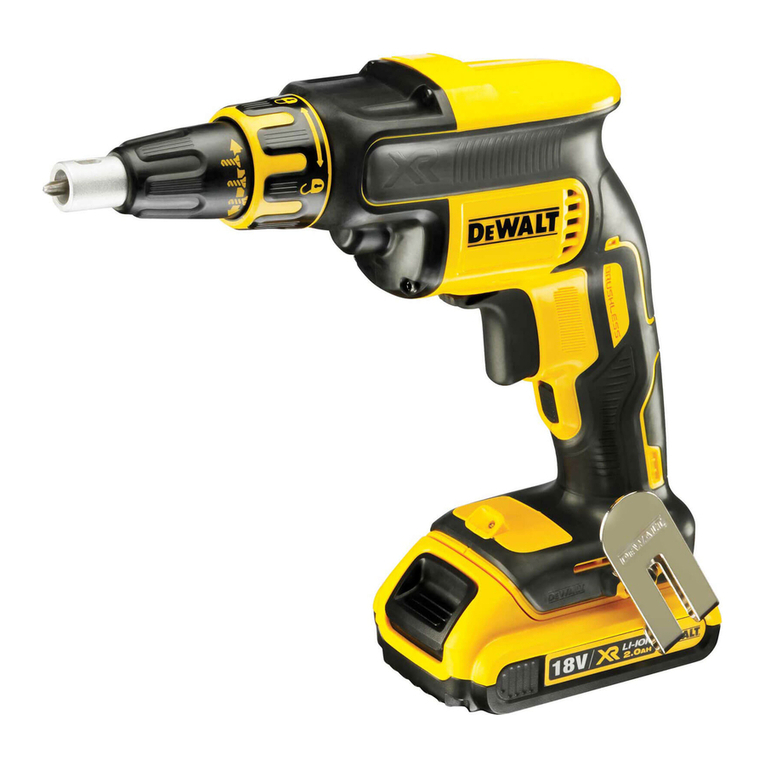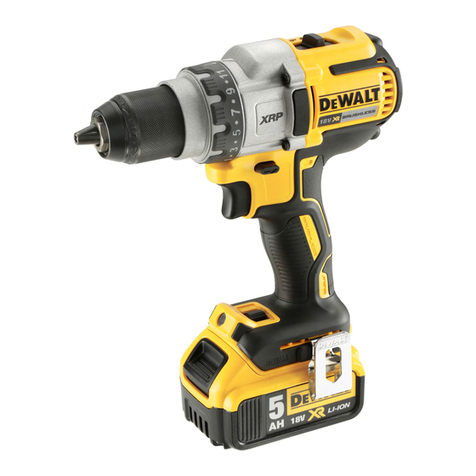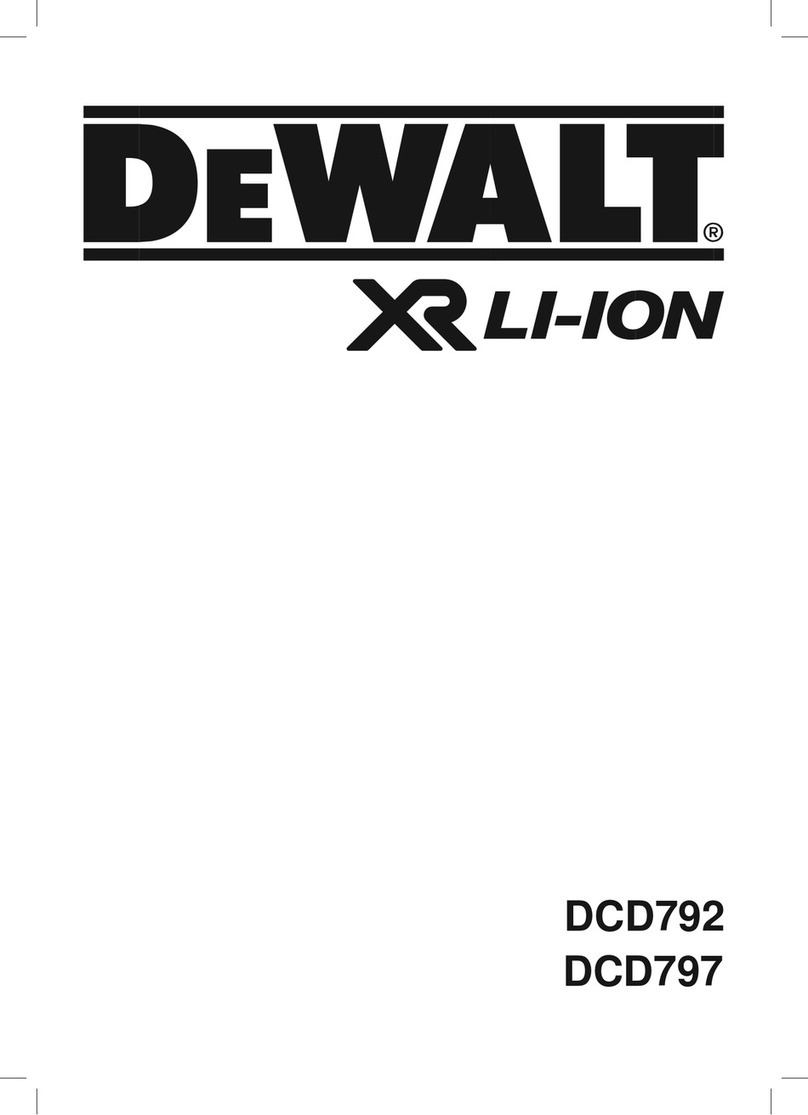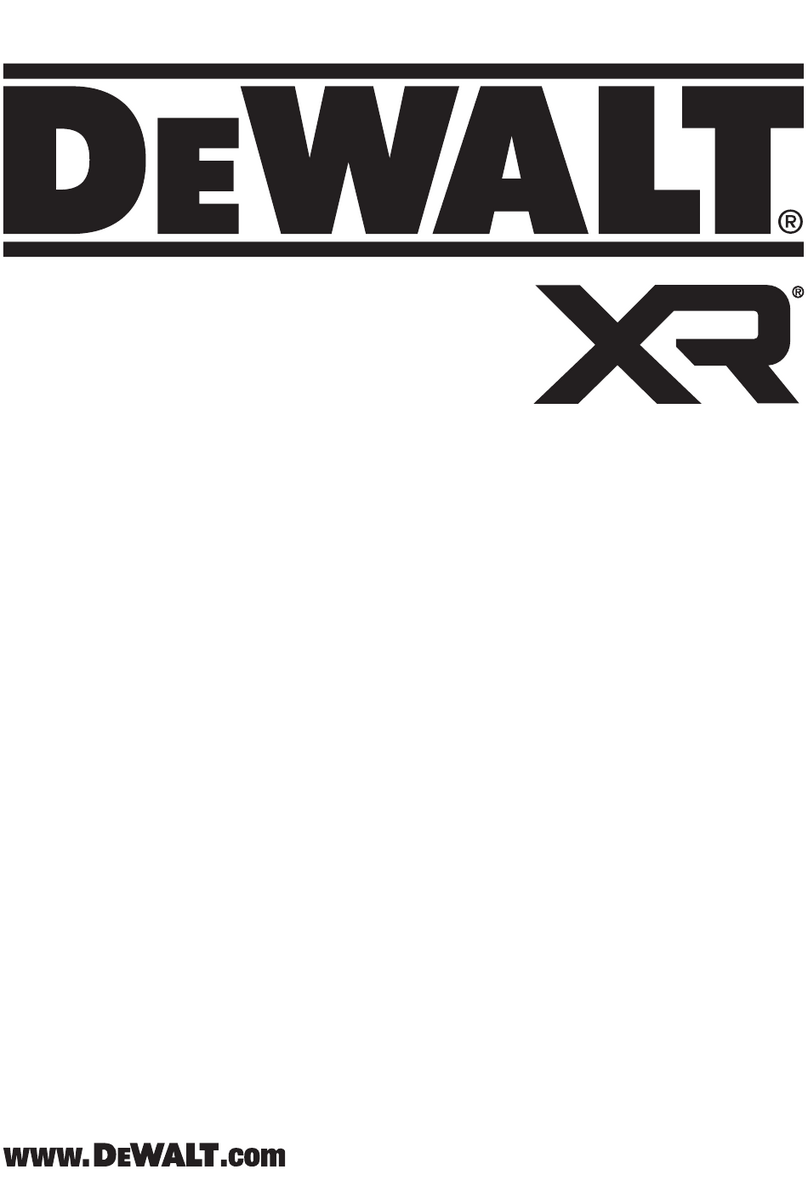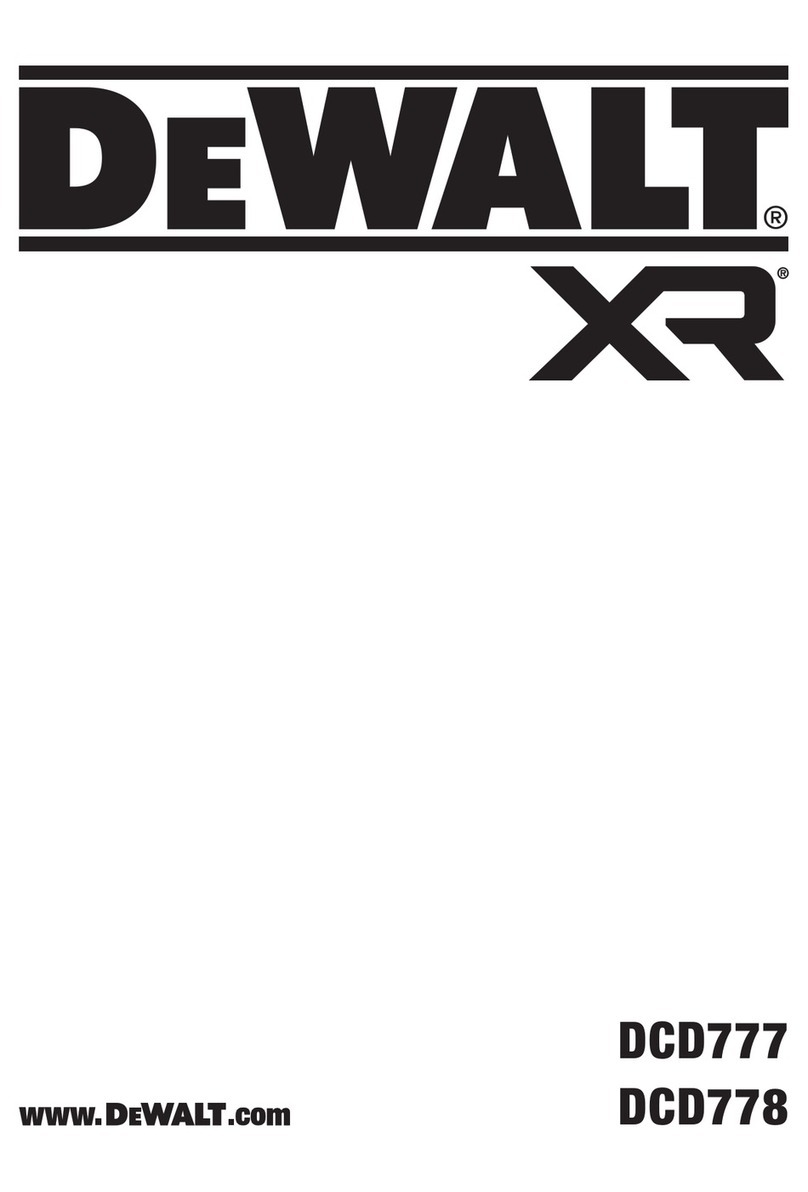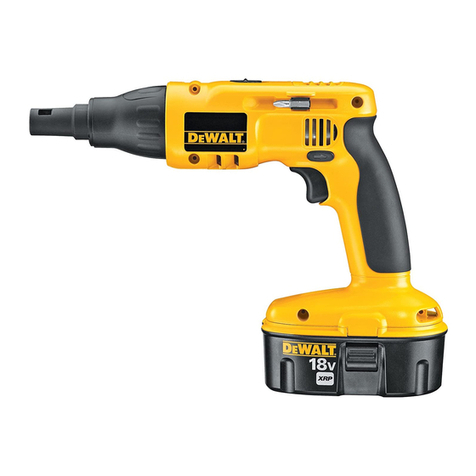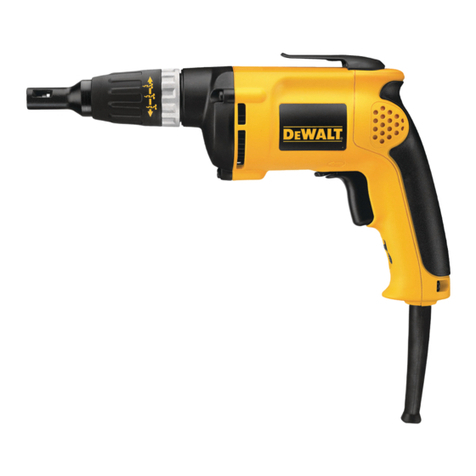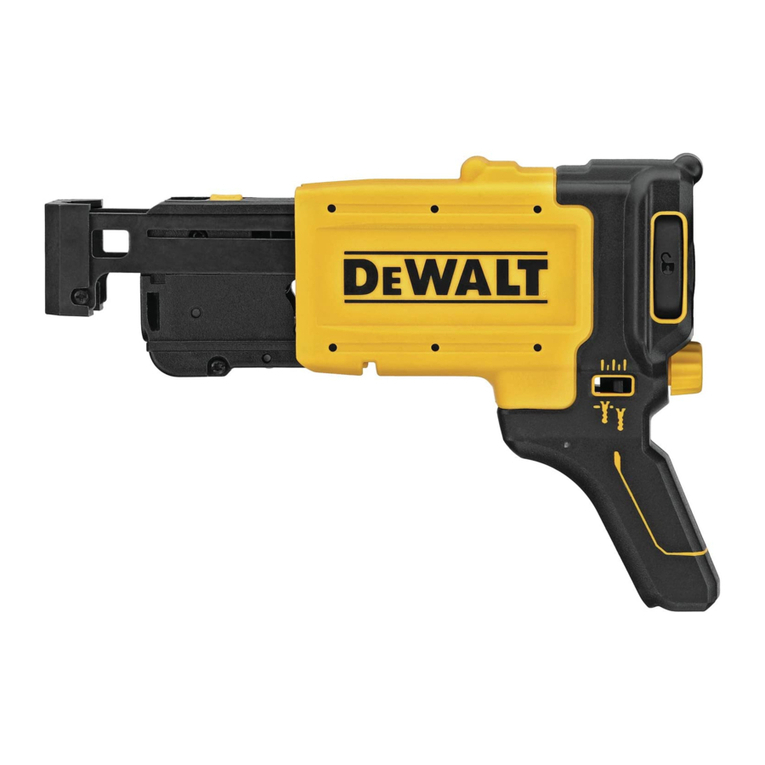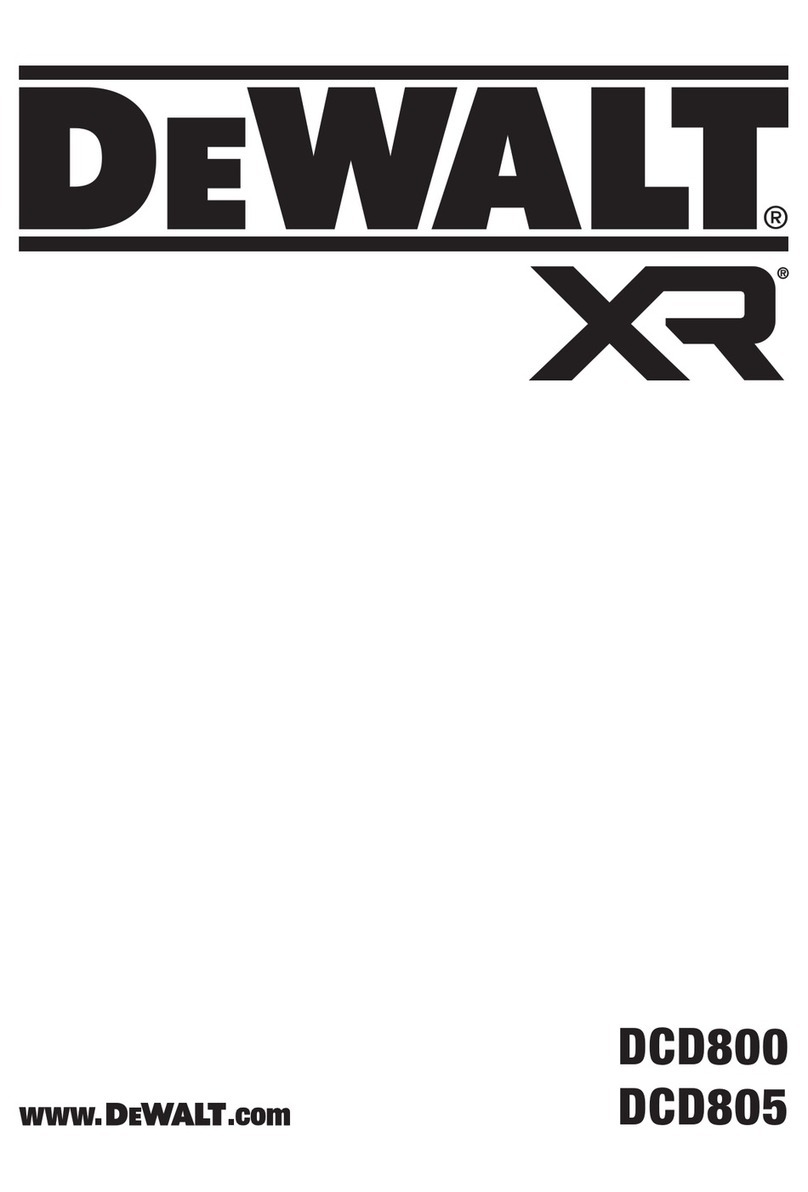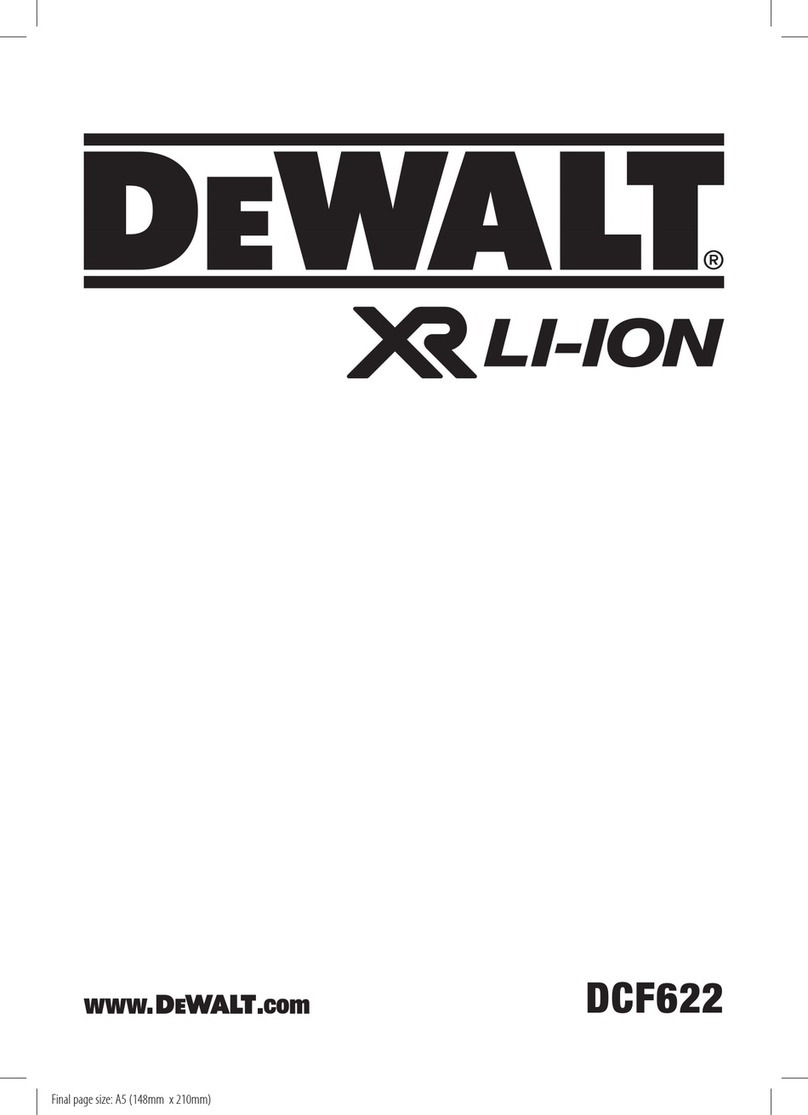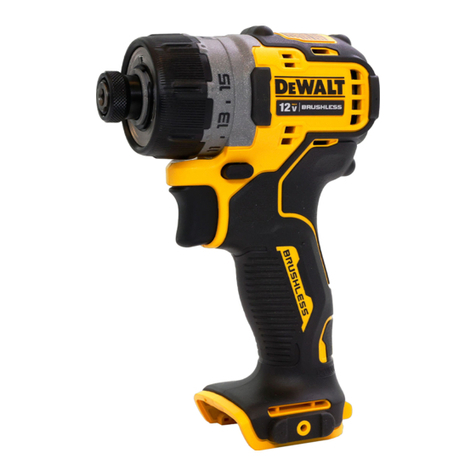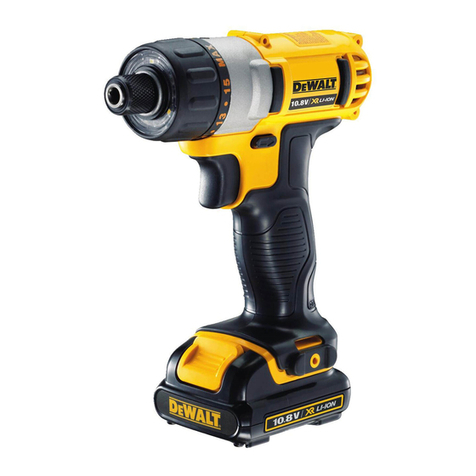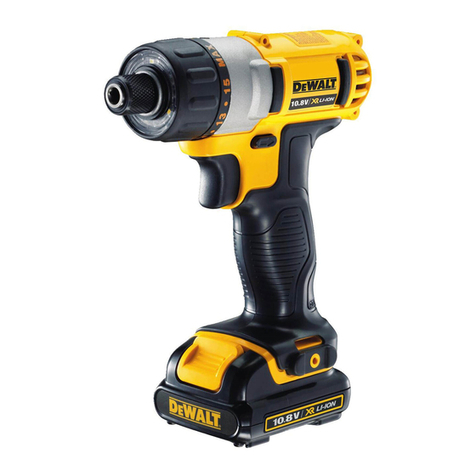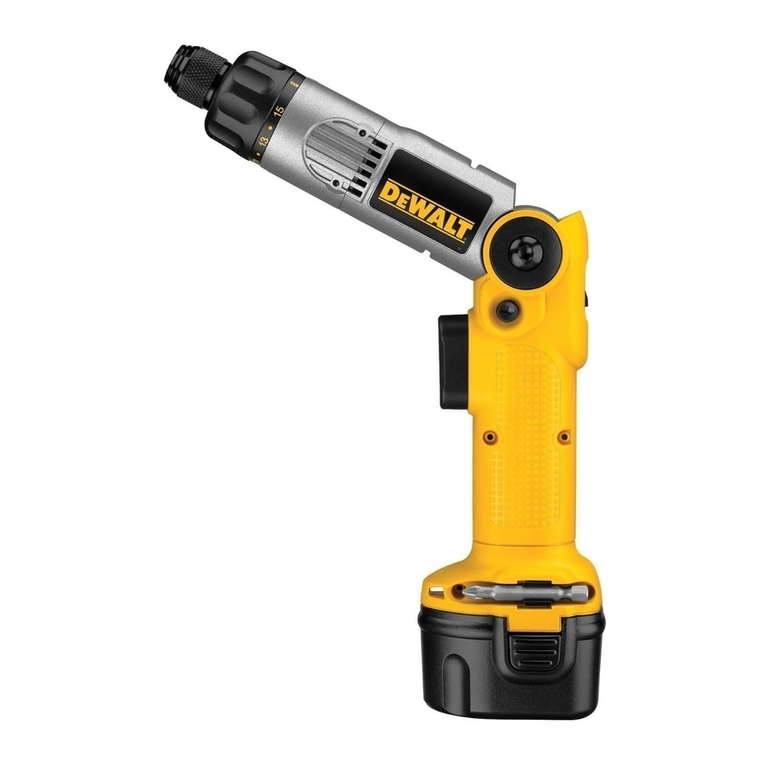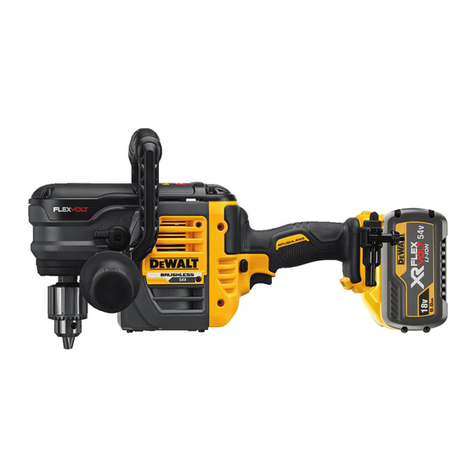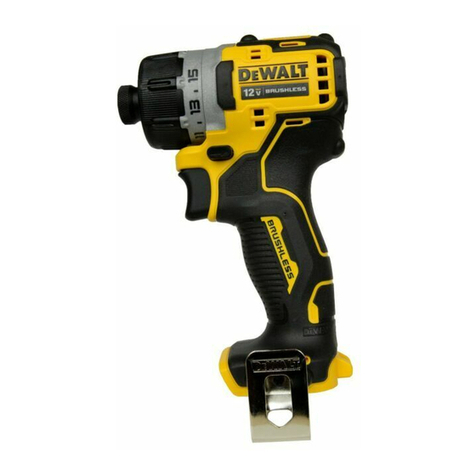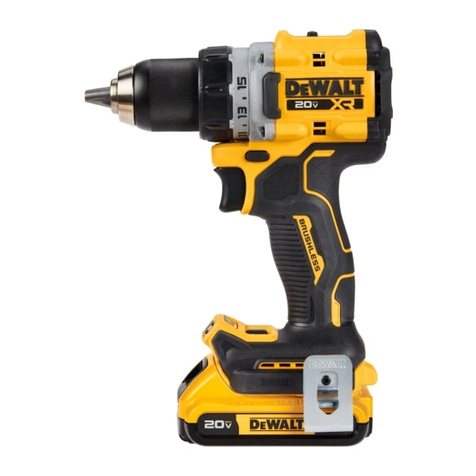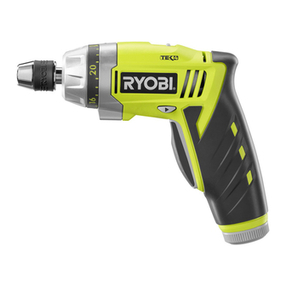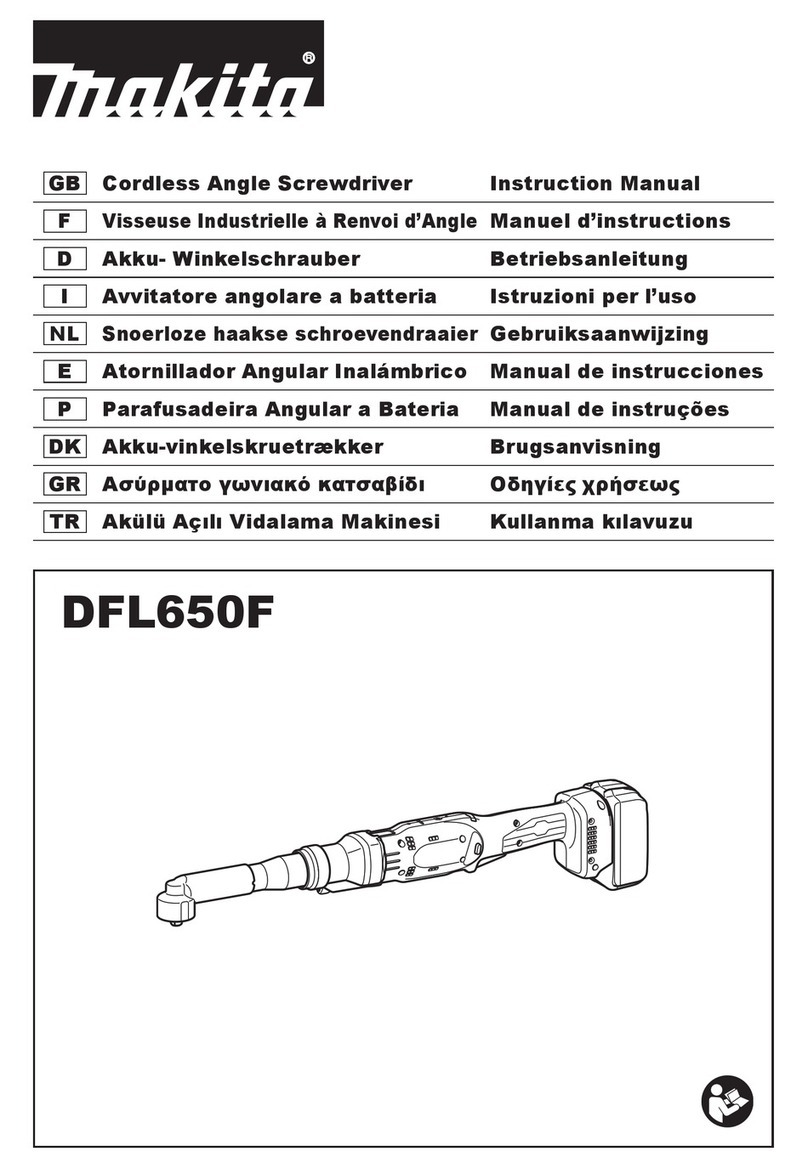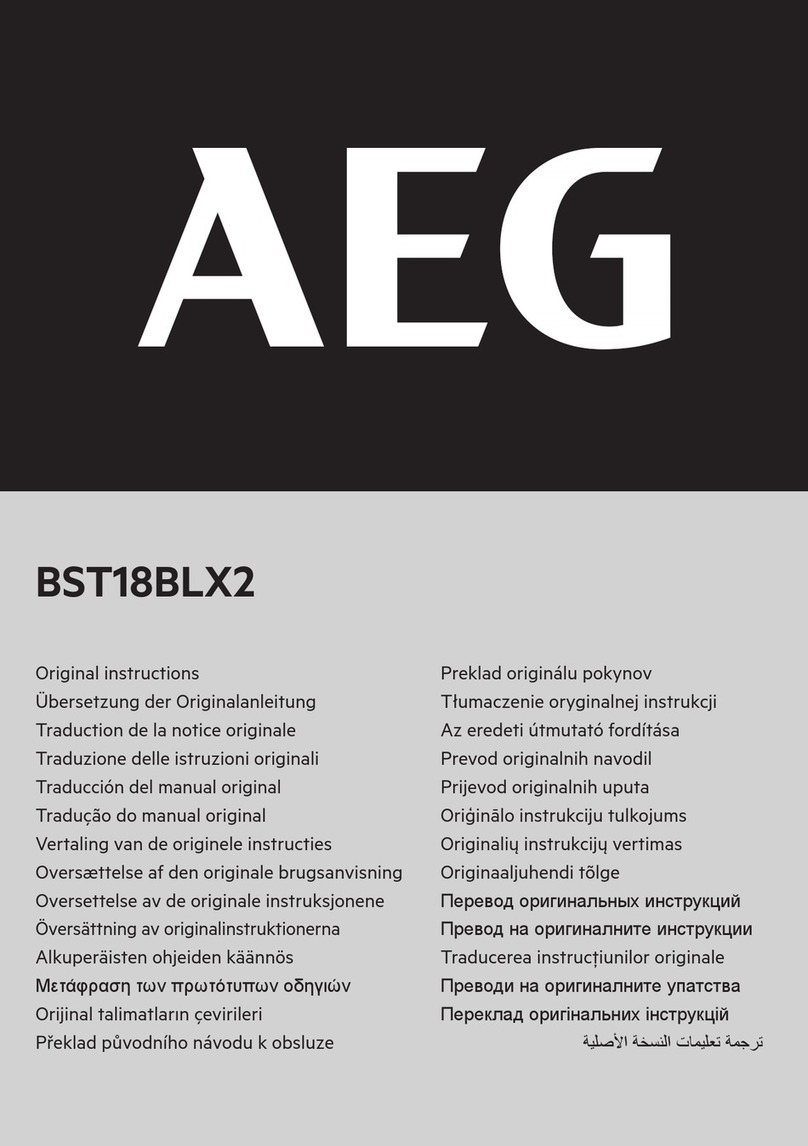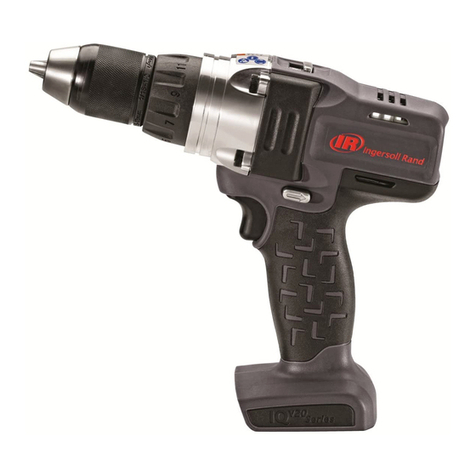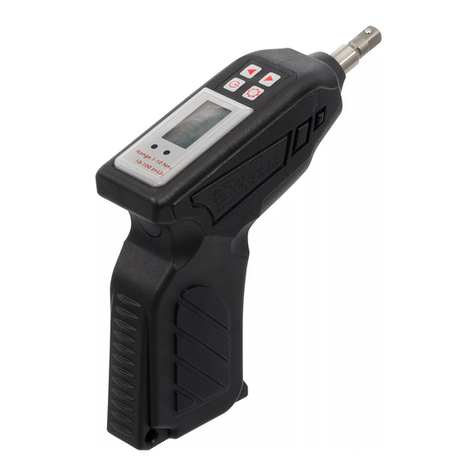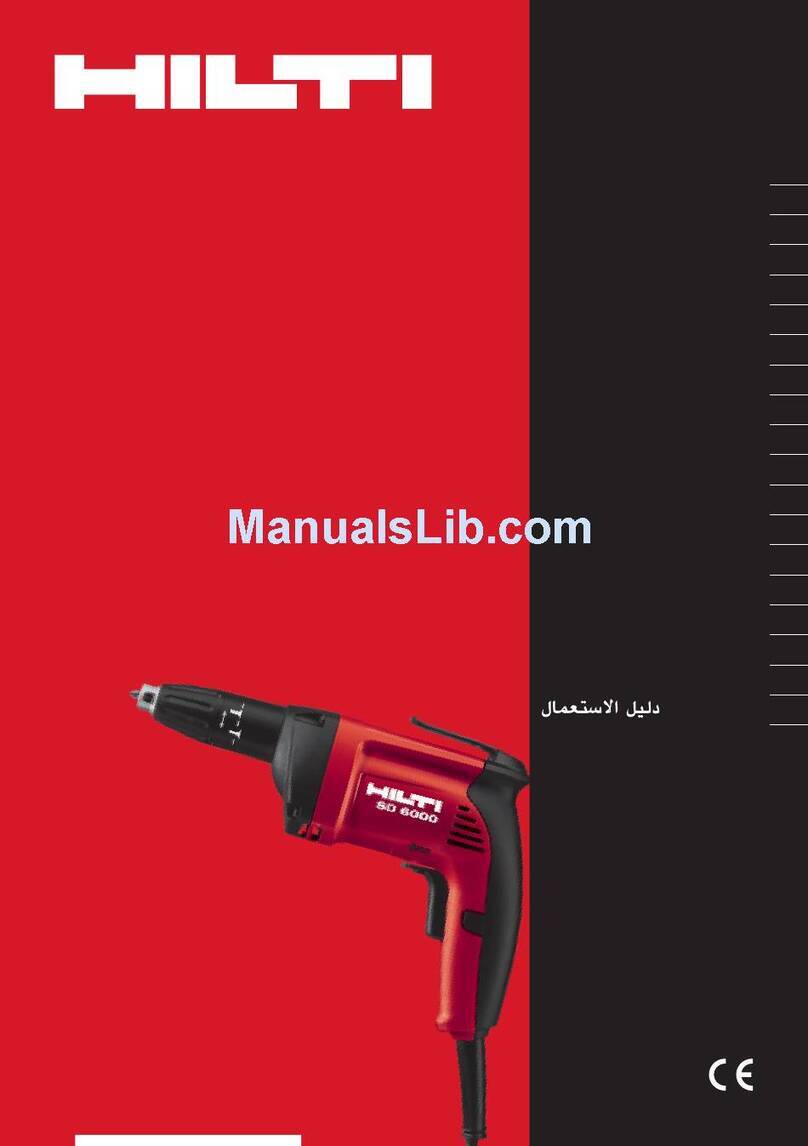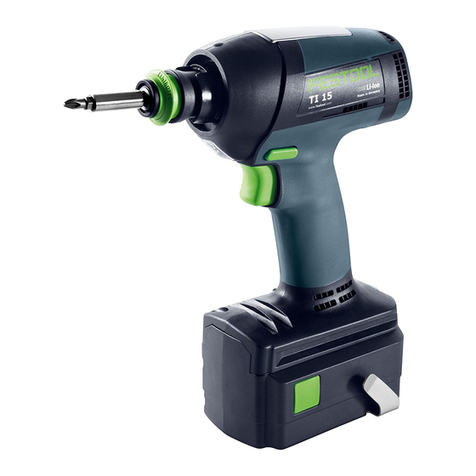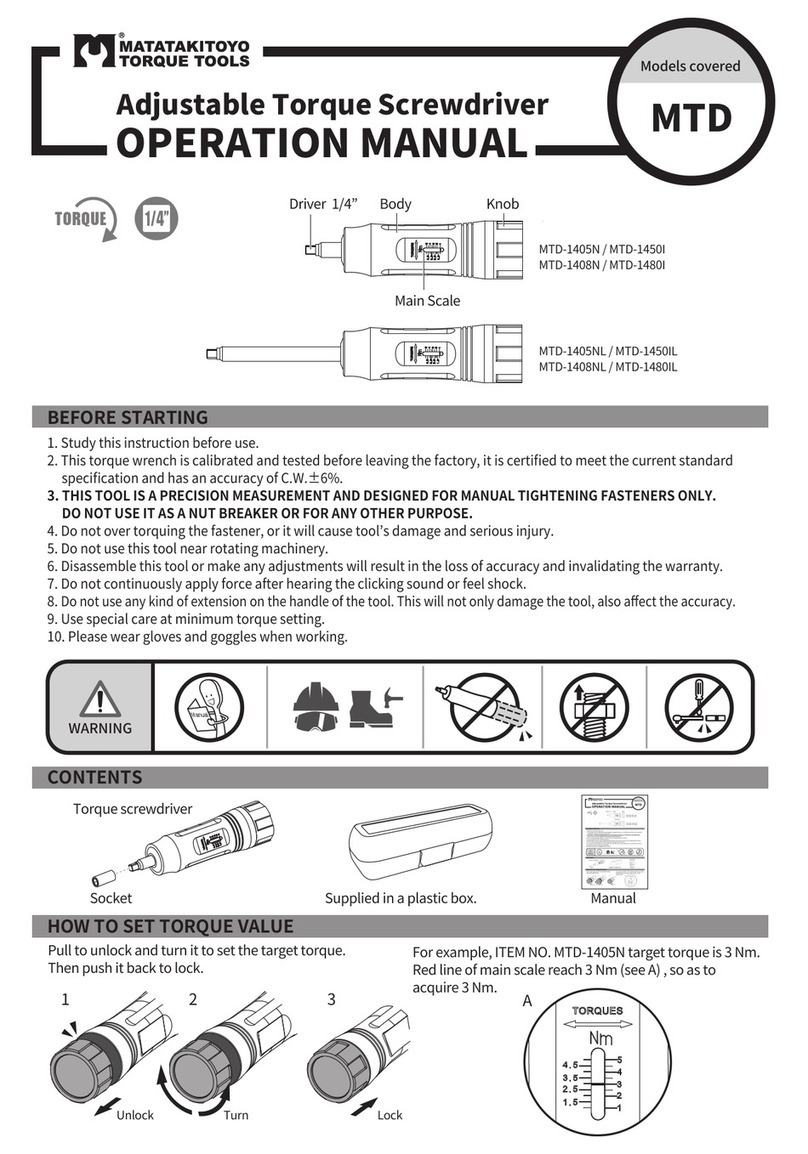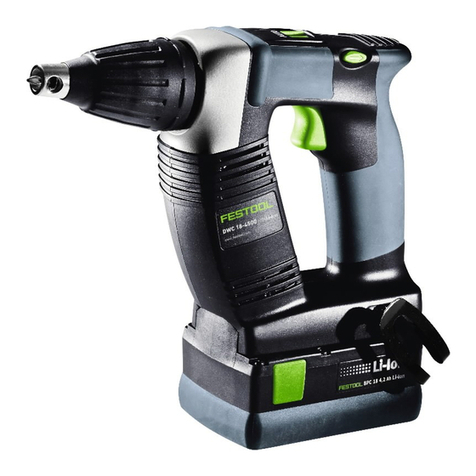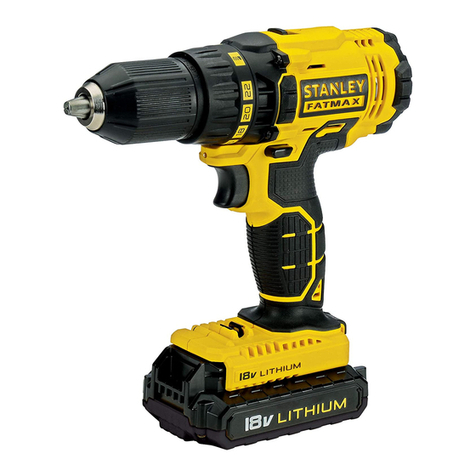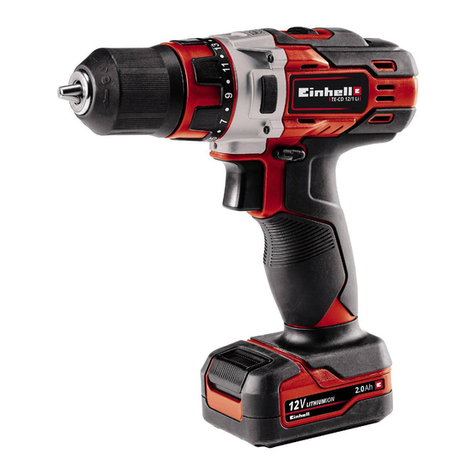
ENGLISH
wrench or a key left attached to arotating
part of thepowertool may result in personal
injury.
e)
Do not overreach. Keepproper
footing and balance at all times. This
enables better control of the power toolin
unexpectedsituations.
f)
Dress properly. Do not wear loose
clothing or jewellery. Keep your hair,
clothing and gloves away from moving
parts. Loose clothes, jewellery or longhair
can be caught in moving parts.
g)
If devices are provided for the connection
of dust extraction and collection facilities,
ensure these are connected andproperly
used.Useof dustcollectioncanreduce
dust-related hazards.
4) POWER TOOL USE AND CARE
a)
Do not force the power tool. Use the
correct power tool for your application.
Thecorrectpowertoolwilldothejob
betterand saferattherateforwhichit
was designed.
b)
Do not use the power tool if theswitch
does not turn it on and off. Any power
tool that cannot be controlled with the switch
is dangerousand must berepaired.
c)
Disconnect the plug from the power
source and/or the battery pack from
the power tool before making any
adjustments, changing accessories, or
storing power tools. Such preventive safety
measures reduce the risk of startingthe
power toolaccidentally.
d)
Store idle powertools out of the reach
of children and do not allow persons
unfamiliar with the power tool or these
instructions to operate the power tool.
Powertoolsaredangerousinthehandsof
untrained users.
e)
Maintain power tools. Check for
misalignment or binding of moving parts,
breakage of parts and any other condition
that may affect the power tool’s operation.
If damaged, have the power tool repaired
beforeuse.Manyaccidentsarecausedby
poorly maintained powertools.
f)
Keep cutting tools sharp and clean.
Properly maintained cutting tools withsharp
cuttingedges are less likelyto bindandare
easier to control.
g)
Use the power tool, accessoriesand
tool bits etc., in accordance with these
instructions taking into account the
working conditions and the work to
be performed. Use of the power tool for
operations different from thoseintended
couldresultina hazardoussituation.
5) BATTERY TOOL USE AND CARE
a)
Recharge only with the charger specified
by the manufacturer. A charger that is
suitable for one type of battery packmay
create a risk of firewhenused withanother
battery pack.
b)
Use power tools only with specifically
designated battery packs. Use of any
otherbattery packsmay createa riskof
injury and fire.
c)
When battery pack is not in use, keepit
away from other metal objects like paper
clips, coins, keys, nails, screws or other
small metal objects that can make a
connection from one terminal to another.
Shortingthebatteryterminalstogethermay
cause burns or a fire.
d)
Under abusive conditions, liquid may be
ejected from the battery, avoid contact.
If contact accidentally occurs, flush with
water. If liquid contacts eyes, additionally
seekmedicalhelp.Liquidejectedfromthe
batterymaycauseirritationorburns.
6) SERVICE
a)
Have your power tool serviced by a
qualified repair person using only identical
replacementparts.Thiswillensurethatthe
safetyofthepowertoolismaintained.
AdditionalSpecific SafetyRulesfor
Drills/Drivers/Hammerdrills
•
Wear ear protectors when impact drilling.
Exposureto noisecancausehearingloss.
•
Use auxiliary handles, if supplied withthe
tool.Lossofcontrolcancausepersonalinjury.
•
Hold power tool by insulated gripping
surfaces when performing an operation
wherethe cutting tool may contact hidden
wiring. Cutting accessory contacting a “live”
wire may make exposed metal parts of the
power tool “live” and could give the operatoran
electric shock.
•
Use clamps or other practical way to secure
and support the workpiece to a stable
platform.Holdingtheworkbyhandoragainst
yourbodyisunstableandmayleadtolossof
control.
•
Wear ear protectors when hammering
for extended periods of time.Prolonged
exposureto highintensitynoisecancause
3
Ташев-Галвинг ООД
www.tashev-galving.com
